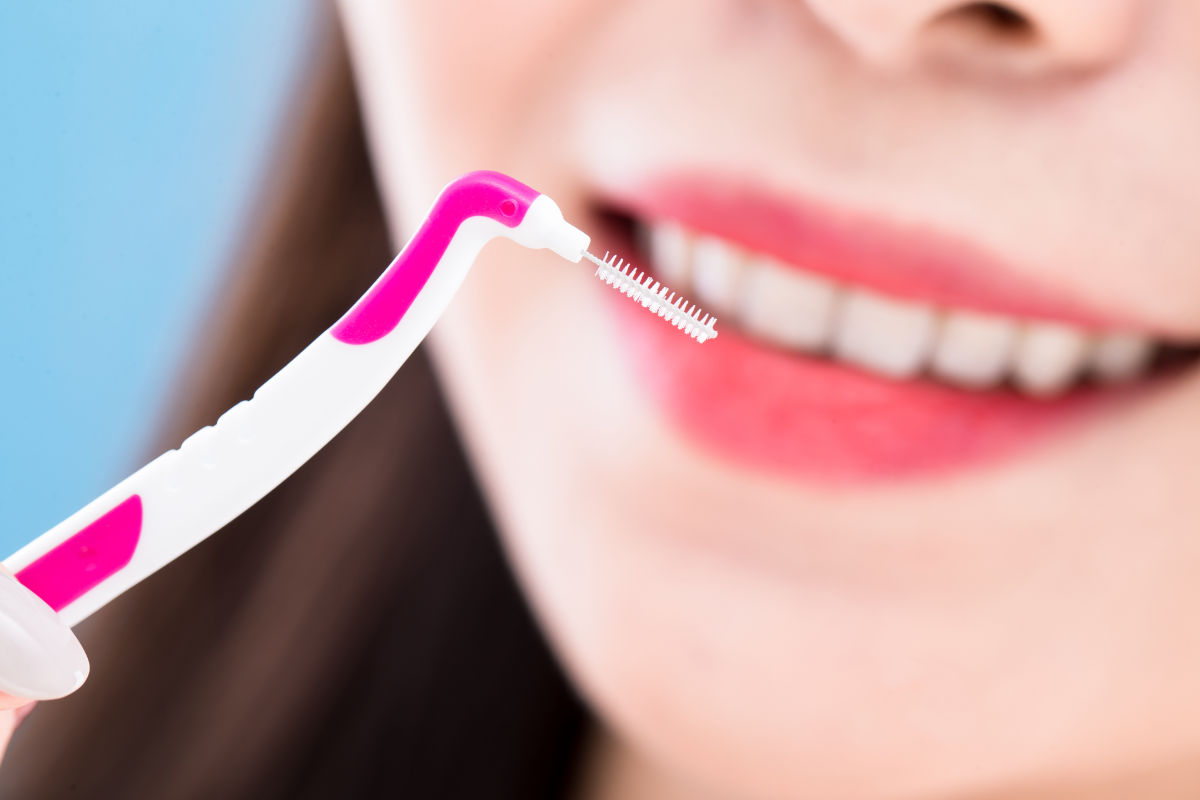Contents

Interdental Brushes: The Ultimate Guide to Choosing Them Right
Did you think you were doing the most for your oral hygiene by diligently brushing your teeth morning and night? That's an excellent start, but know that for a perfectly healthy mouth, it's also essential to clean the interdental spaces using dental floss or brushes. Let's take a closer look at these small, often overlooked accessories that are so effective at chasing away dental plaque!
Interdental Brushes: What Exactly Are They For?
Even with meticulous tooth brushing, some areas between the teeth remain inaccessible to the bristles of the brush, whether manual or electric. As a result, dental plaque accumulates there, eventually promoting the development of cavities and periodontal diseases (gingivitis, periodontitis...).
To get rid of these nasty bacteria, there are two complementary solutions to brushing:
- Dental floss, ideal if you have very tight or overlapping teeth.
- Interdental brushes, perfect for larger spaces between teeth or if you have fragile gums.
Thanks to their flexible wire topped with soft bristles, interdental brushes easily insert between the teeth for a targeted, gentle cleaning. They effectively dislodge food residues and remove dental plaque.
How-To Guide: How to Use Interdental Brushes Correctly
Super simple to use, interdental brushes easily fit into your oral hygiene routine. Just follow these few steps:
- Perform your usual brushing with your toothbrush.
- Gently insert the brush into each interdental space, rubbing gently back and forth for a few seconds.
- Rinse the brush thoroughly with clean water after use and let it air dry before storing it in its case.
- Change the brush every 7 to 10 days, or as soon as the bristles are worn.
Note that interdental brushes can also be used to clean bridges, implants, or even orthodontic braces.
Initially, it's normal to notice slight bleeding of the gums. But if this persists or worsens after a few days, it's best to stop using the brushes and consult your dentist.
A Guide to Choosing Your Interdental Brushes
Brushes come in different sizes, designed to fit all interdental spaces. Diameters generally range from 0.4 mm (ISO size 0) for the finest to 1.5 mm (ISO size 8) for the widest. But how do you know which size to choose?
If it's your first time, we advise starting with the finest brushes and then adjusting based on how they feel:
- If the wire bends easily or you feel the brush is too loose, move up to the next size.
- Conversely, if the brush struggles to insert or gets stuck between the teeth, opt for a smaller diameter.
- For very tight teeth, prefer dental floss to brushes to avoid forcing and injuring yourself.
Do not hesitate to ask your dentist for advice on choosing the size best suited to your dentition.
Comparison of the Best Interdental Brushes
| Model | Brand | Strong Points | Average Price |
|---|---|---|---|
| Soft-Picks Advanced | GUM |
| $5 - $7 |
| Interdental Brushes Original | TePe |
| $6 - $8 |
| Easy Brush Standard | DenTek |
| $4 - $6 |
Our Top 3 Interdental Brushes
Among the many references tested and approved, here are the 3 brushes that most impressed our editorial team.
1. GUM Soft-Picks Advanced
We love the wire-free, flexible rubber bristles of GUM Soft-Picks, which are extremely gentle on the gums. Their curved, ergonomic handle makes it very easy to reach back teeth. They are disposable, which is convenient, and come in a handy travel case. Our top pick for comfort and ease of use!
2. TePe Interdental Brushes Original
With its huge range of 9 color-coded sizes, TePe is a go-to for finding the perfect fit. Their plastic-coated wire is gentle on teeth and gums, and the simple, straight handle is easy for anyone to use. They offer excellent value and are a dentist-recommended classic.
3. DenTek Easy Brush Standard
We love the value of DenTek brushes. Their main asset is a tapered design that fits both small and large spaces, making them versatile. The flexible wire and handle make them easy to maneuver, and the advanced fluoride coating is a nice bonus for cavity prevention.
Conclusion
As you've understood, if you want healthy teeth and gums, you need to get on board! So don't wait any longer to adopt interdental brushes and make them your best allies against dental plaque. By using them daily in addition to your toothbrush, you will effectively limit the risk of cavities and periodontal diseases, while maintaining fresh breath.
With our guide, you now have all the information you need to choose the brushes best suited to your needs and budget. So it's your turn to play, and tell us in the comments which ones have convinced you the most!
